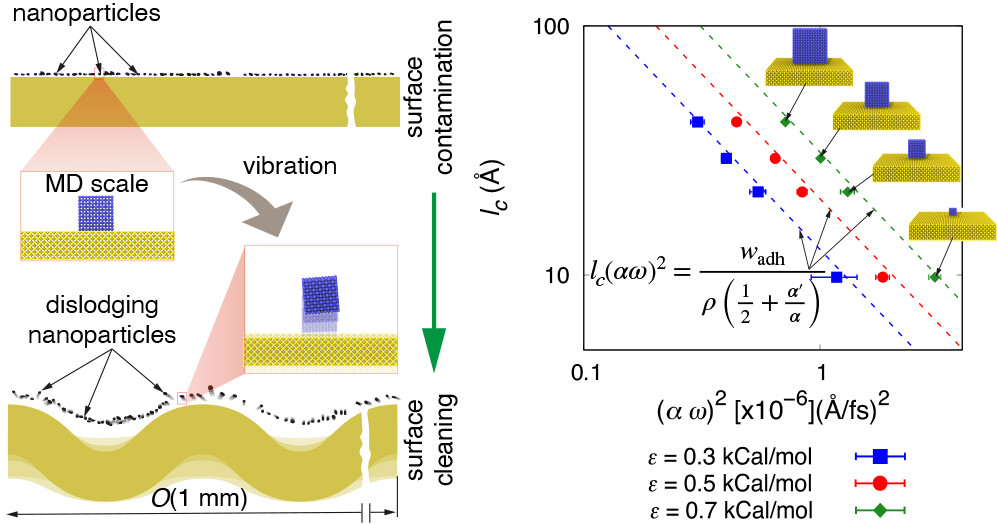Abstract
The development of active self-cleaning surfaces, i.e., surfaces that remove nanoscale contaminants using external forces such as electric or magnetic fields, is critical to many engineering applications. The use of surface vibrations represents a promising alternative, but the underlying nanoscale physics, in the absence of an intermediate liquid medium, is poorly understood. We used molecular dynamics simulations to explore the use of ultra-high-frequency surface acoustic wave devices for contaminant removal. Our simulations reveal that there exists a critical vibrational energy threshold, determined by the amplitude and frequency of the surface vibrations, that must be surpassed to effectively dislodge contaminant particles. We derive a universal scaling law that links the characteristic size of particles to the optimal vibrational parameters required for their removal. This provides a theoretical framework to aid the development of advanced, scalable self-cleaning surfaces with applications ranging from semiconductors to large-scale industrial systems.
